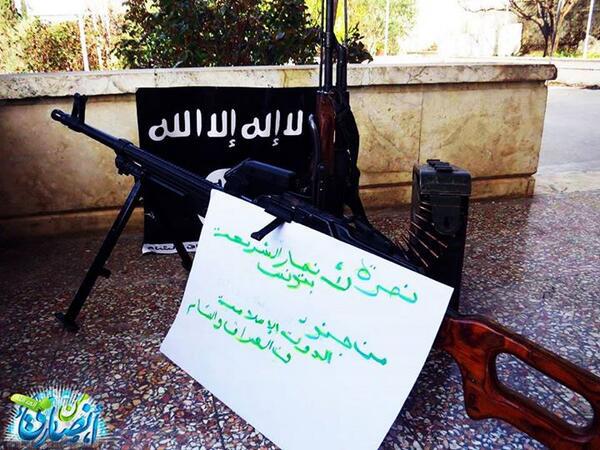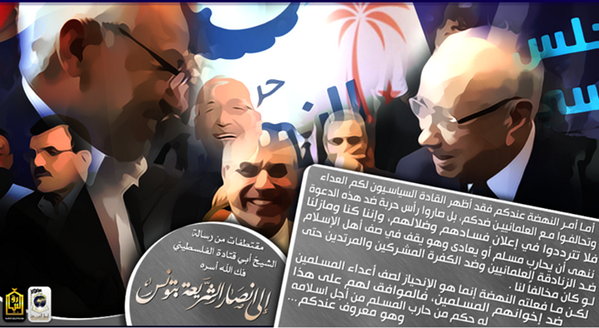NOTE: As with all guest posts, the opinions expressed below are those of the guest author and they do not necessarily represent the views of this blogs administrator and does not at all represent his employer at the Washington Institute for Near East Policy.
Jihadology.net aims to not only provide primary sources for researchers and occasional analysis of them, but also to allow other young and upcoming students as well as established academics or policy wonks to contribute original analysis on issues related to jihadism. If you would like to contribute a piece, please email your idea/post to azelin [at] jihadology [dot] net.
Click here to see an archive of all guest posts.
—
The Syria Twitter Financiers Post-Sanctions
By Asher Berman
Introduction
A new type of financier supporting Islamist armed groups emerged during the initial years of the Syrian conflict. These Gulf-based financiers openly advertised their activities on social media, using the medium to attract donations from across the Gulf. In some cases, they publicly documented their successive trips to Syria and meetings with prominent Islamist rebel leaders, which made them celebrities in the Islamist Twitter scene. One particularly prominent network of financiers was associated with the Umma Party, a Salafist opposition movement that was started in Kuwait in 2008 and spread to other Gulf countries during the Arab Spring. Other financiers worked independently or banded together to form joint fundraising campaigns.
The international community moved slowly to neutralize these financiers, but in August 2014, the US government sanctioned two of the most prominent individuals, Hajaj al-Ajmi and Shafi al-Ajmi of Kuwait.i The UN also sanctioned Hajaj and Shafi, and Kuwait, through which most of the money was being funneled, passed laws designed to end the use of Kuwait as a weigh station for money moving to terrorist groups abroad.ii,iii,iv The financiers, both sanctioned and unsanctioned, have greatly curtailed their activities since August 2014 and have seen their celebrity diminished. Those who are still active use social media to fundraise for humanitarian projects in Syria and are no longer publicly supporting armed groups. The one exception is ‘Abdullah al-Muheisini, who is unique in that he left the Gulf and lives inside Syria fulltime. Although the sanctions announced in August 2014 did not target all of the individuals publicly fundraising for Islamist armed groups in Syria, it did create a new environment in the Gulf in which these activities are no longer being tolerated and seem to have stopped. The one exception, al-Muheisini, lives in Syria and is therefore not subject to the same governmental pressures as Gulf-based financiers.
The Financiers:
Hajaj al-Ajmi: Hajaj al-Ajmi was a relative unknown prior to the start of the Syrian conflict in 2011, but he skillfully used social media to attract attention by documenting his successive trips to Syria, and quickly became well known in the Middle East. After the US announced sanctions targeting Hajaj, Twitter shutdown his account. Hajaj quickly created a new account and a hashtag was circulate called “#Campaign_for_a_million_followers_for_Hajaj_al-Ajmi” which helped him regain roughly 100,000 followers of the nearly 500,000 that he had pre-sanctions.v Hajaj, still an active social media user, seems to feel that the sanctions are unfair, recently complaining on Twitter that members of the Kuwaiti parliament continue to support the al-Assad regime without consequence, while he was sanctioned and can no longer engage in normal business activities.vi Hajaj appears to be struggling to adapt to life under sanctions. He told an interviewer that he is trying to work in the perfume business but cannot get the government to register a car or business in his name.vii His contacts in Qatar reportedly invited him to work with them, for which Hajaj expressed his appreciation on Twitter, but regretfully declined the offer due to an ongoing travel ban.viii
Although Hajaj was sanctioned by the US and the UN, sanctions did not target the charity that he ran and utilized to fundraise for armed groups in Syria, al-Haiah al-Sh’abiyah l-D’am al-Thawrah al-Suriyah (The Popular Commission to Support the Syrian Revolution), nor his partner in running the charity, Umma Party member Irshid al-Harji. The charity remains operational under al-Hajri’s leadership, but has changed its name to al-Haiah Zakat al-Sh’abiyah (The Popular Charity Commission).ix,x Despite the name change, the charity is using the same logo, Twitter account, and directs donors to the same address in Kuwait’s Aqilah neighborhood as prior to August 2014.xi,xii The organization now focuses on distributing relief in Syria, and recently delivered supplies to Syrians in Idlib and Lattakia Provinces in cooperation with the Umma Party’s Istanbul office.xiii
Muhamed al-Mufrih: Muhamed al-Mufrih was a Saudi-Arabian financier and head of the Saudi branch of the Umma Party, which formed in 2011 at the beginning of the Arab Spring. Saudi authorities, who do not permit organized opposition movements, quickly arrested the Umma Party leadership, but al-Mufrih was able to flee the country, surfacing in Istanbul. During the Syrian revolution al-Mufrih appears to have played an important role in the constellation of Umma Party-associated financiers, accompanying Hajaj al-Ajmi on trips inside Syria and dedicating an Umma Brigade training camp in honor of a United Arab Emirates Umma Party leader who was killed while fighting with Ahrar al-Sham.xiv,xv
Al-Mufrih died in December 2014 following a sudden and mysterious illness. Hakim al-Matiri, founder of the Umma Party, characterized al-Mufrih’s death as an assassination-by-poisoning, which was understood as an accusation aimed at the Saudi Arabian government.xvi The possibility of al-Mufrih getting assassinated was on the minds of the Ummah party leadership prior to his death in December 2014 due to assaults targeting al-Mufrih that occurred earlier in 2014 in Istanbul. The Umma Party responded to the preceding assaults by publishing a public letter to Turkish officials in May 2014 calling on the Turkish state to protect al-Mufrih from assassination.xvii
Al-Matiri’s eulogy for al-Mufrih provided greater detail on al-Mufrih’s role in financing Islamist groups in Syria. Al-Matiri cited al-Mufrih’s early involvement in the Syrian revolution, praising him for working with Abu Abdul Aziz al-Qatari in 2011 to support Ahrar al-Sham, a Salafist armed group that operates alongside al-Qaeda’s Jabhat al-Nusrah, while it was in its formative stages. Al-Qatari was a veteran of the Afghan Jihad in the 1980s and was known for being close with Jabhat al-Nusrah. He founded and led Jund al-Aqsa, a jihadist group based in Idlib Province, until he was captured and killed in 2014 by the Syrian Revolutionaries Front.
Category: Guest Post
GUEST POST: Muhammad al-Amin on Ahrar al-Sham’s Evolving Relationship with Jabhat al-Nusrah and Global Jihadism
NOTE: As with all guest posts, the opinions expressed below are those of the guest author and they do not necessarily represent the views of this blogs administrator and does not at all represent his employer at the Washington Institute for Near East Policy.
Jihadology.net aims to not only provide primary sources for researchers and occasional analysis of them, but also to allow other young and upcoming students as well as established academics or policy wonks to contribute original analysis on issues related to jihadism. If you would like to contribute a piece, please email your idea/post to azelin [at] jihadology [dot] net.
Click here to see an archive of all guest posts.
—
Muhammad al-Amin on Ahrar al-Sham’s Evolving Relationship with Jabhat al-Nusrah and Global Jihadism
By Sam Heller
Below we have a translation of Muhammad al-Amin’s Facebook testimony on now-deceased Ahrar al-Sham commander Abu Yazan al-Shami and the evolution of Ahrar’s relationship with Jabhat al-Nusrah and global jihadism.
Al-Amin seems to expand on some of what we already knew about Ahrar’s jihadist pedigree while also portraying an Ahrar that sharply diverged from hardliners in the Islamic State in Iraq and al-Sham (ISIS) and, later, a more extreme iteration of Nusrah. The Ahrar al-Sham and Abu Yazan whom al-Amin describes were more deeply woven into international jihadism than has been previously understood, but nonetheless became progressively more alarmed as mostly foreign hyper-extremists crowded out Syria’s own revolutionaries. Al-Amin reports a more symbiotic relationship between Ahrar and Syrian al-Qaeda affiliate Nusrah than has been reported, with veteran jihadist Abu Khaled al-Souri apparently serving as a key link. Provocatively, he suggests Ahrar somehow supported a gravely weakened Nusrah after the April 2013 announcement of ISIS led many of Nusrah’s most extreme members to defect en masse. Yet he also describes increasing alienation between Nusrah and Ahrar’s leaderships as Nusrah’s relative moderates were sidelined and it started to prioritize an ISIS-like “emirate” in Syria’s liberated areas; Ahrar, meanwhile, was by that time working to rejoin Syria’s revolution and restore the uprising’s popular character.
Al-Amin is reportedly a sort of independent spiritual figure who, although not an Ahrar member himself, was close to and in regular contact with the top echelon of Ahrar leadership that died in a mysterious 9 September explosion. He was apparently connected enough that his account of Ahrar’s internal debates and the evolution of Syria’s jihadist scene are worth taking seriously, if not entirely at face value. Al-Amin’s testimony echoes McClatchy correspondent Mousab Alhamadee’s personal recollection of Ahrar leader Hassan Abboud. Alhamadee held Abboud responsible for introducing international jihadism into the Syrian revolution – although, Alhamadee thought, Abboud ultimately came to regret his error.
Al-Amin’s narrative comes through the prism of his relationship with Ahrar’s old leadership, and Abu Yazan al-Shami in particular. Abu Yazan (Muhammad al-Shami) had been a commander in Harakat al-Fajr al-Islamiyyah, one of the predecessor brigades that merged to become Harakat Ahrar al-Sham al-Islamiyyah. Abu Yazan went on to be one of Ahrar’s top leaders, a member of its Shura Council and its Aleppo emir. (I actually translated Abu Yazan’s sharp rebuke of Salafi-jihadist theorists’ calls for jihadist purism just days before his death.)
There are reasons to view al-Amin’s account with some skepticism. His concluding description of a tumultuous meeting between Nusrah chief Abu Muhammad al-Jolani and Ahrar’s leadership immediately prior to the September blast is the biggest and most obvious red flag. The paragraph is apparently lifted at least in part from one of two sources: a 4 November Assafir article or a 26 November anonymous Syrian Media Center post, which itself plagiarized the Assafir article. If al-Amin’s friends and contacts in Ahrar were all wiped out simultaneously, of course, it makes sense that he might not have a first-hand account of their last days. In any case, at least that paragraph is worth discounting, and it’s difficult to assess if other press accounts have been woven in elsewhere. It’s also possible that al-Amin is guilty of a sort of jihadist resume-padding. Particularly as ISIS has derided other factions as “Sahawat” (Awakenings, basically Western stooges), many militant rivals seem to have felt the need to emphasize their jihadist bona fides in the fierce debate that has ensued, both to defend themselves and to position themselves to more effectively attack ISIS’s legitimacy. There is some chance, then, that al-Amin has played up Abu Yazan and Ahrar’s track record in order to cast their late break with Nusrah as even more dramatic and impactful.
Some Ahrar al-Sham leaders are, understandably, perturbed about al-Amin’s post. Below is Ahrar commander Khaled Abu Anas’s response:
لمن يسأل عن الأخ محمد الأمين نقول هو ليس شرعيا ولا منتسبا لنا ، أما عن آرائه فهو حر فيها قد نتفق ونختلف معه ولكننا بالتأكيد لانوافقه بأسلوبه
— خالد أبو أنس (@khaled852111) December 4, 2014
Khaled Abu Anas: “To those asking about Brother Muhammad al-Amin, we say that he isn’t [an Ahrar al-Sham] shar’i or member. As for his opinions, he’s free to have them. We may agree or disagree with him, but we certainly don’t agree with his style.”
Ahrar has always been emphatic that its aspirations are local, that it seeks an Islamic state in Syria but does not aspire to the sort of global forever-war waged by al-Qaeda. Ahrar’s leaders seem to have mostly emerged from a global jihadist milieu but consciously declined to join al-Qaeda in its universal project, even if they maintained friendly relations with some jihadist fellow travelers. In the months before 9 September, moreover, Ahrar’s original leadership had grown progressively more critical of Salafi-jihadist orthodoxy and seemed to have made real steps towards revolutionary moderation. (Though the Ahrar leadership’s real control over the movement’s component brigades was and is an open question.) Throughout, Ahrar has always avoided being publicly linked with al-Qaeda, seemingly for both principled and pragmatic reasons. They’ve typically been keen not to say things like – to quote al-Amin – “Sheikh Abu Yazan’s relationship with al-Qaeda dates to before the Syrian revolution.”
Below we see an angry tweet from “Muzamjer al-Sham” – an influential, pseudonymous jihadist commenter who himself seems to be a well-connected jihad veteran – attesting to Ahrar’s independence:
مما وعته أذني من الشيخ أبو عبدالله الحموي رحمه الله بعد خروجه من السجن قوله : “لن نكون في يوم من الأيام جزءاً من القاعدة” #جريمة_التصنيف
— مزمجر الشام (@saleelalmajd1) September 16, 2014
Muzamjer al-Sham: “Among the things I heard personally from Sheikh Abu Abdullah al-Hamawi (Hassan Abboud), may God have mercy on him, after he got out of prison (Seidnaya): ‘We will never, not for one day, be a part of al-Qaeda.’”
The tweet was prompted by (unfounded) September reports that the United States had designated Ahrar a foreign terrorist organization. These rumors have surfaced periodically, although so far they’ve come to nothing. (Of course, America does seem to have launched an airstrike on an Ahrar base in November, and Secretary of State John Kerry just floated the idea of a regional alliance against Ahrar al-Sham and three designated terrorist organizations.) Mostly, Ahrar’s critical role in the Syrian revolution and its sheer weight on the ground have obliged policymakers and Syrians themselves to grapple with how – or whether – to engage Ahrar and keep it firmly in the Syrian rebel camp. Ahrar’s hybrid identity means the question is likely to remain a thorny one.
Translation:
Facebook, “Al-Sheikh al-Amin,” 30 November 2014, https://www.facebook.com/photo.php?fbid=371956529633047.
Sheikh Abu Yazan’s Opinion on Jabhat al-Nusrah
Sheikh Abu Yazan’s relationship with al-Qaeda dates to before the Syrian revolution. The sheikh, may God accept him, went to leave for Iraq, and he was supposed to be the mufti and chief judge for Da’esh (ISIS). He was surprised that they had requested that, and he said, “It’s evidence that they don’t have qualified people on hand.” But, in His mercy, God on high steered the sheikh away, and he was arrested hours before leaving.
As soon as he left prison, the sheikh maintained strong relations with the various jihadist trends. He knew many of those who founded al-Nusrah, and he would come to me with its news when it was a secret movement. He even expressed regret over Abu Basir al-Tartousi’s statement about them was issued, as that meant there was no longer room to advise al-Nusrah (even though [Abu Basir’s] criticism was correct). The commanders in al-Nusrah knew the sheikh, trusted him, and asked for his advice.
Then Abu Yazan came to Syria (lit., made nafir) and chose to join Harakat al-Fajr, which merged with Ahrar. At that time,













